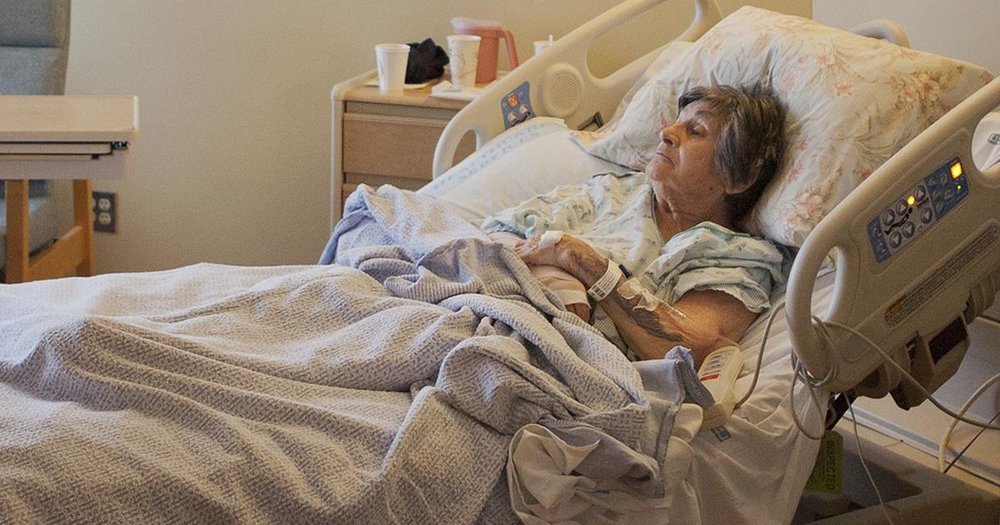After receiving a sudden phone call in the middle of the night explaining that her mother had fallen too ill to get up from bed, a young woman hurried to the small town in Alabama where her frail 68-year-old mother was spending what seemed like the final few days of her life.
As she rushed through the front door, looking for a familiar face, she finally saw her; a frail shadow of a pale woman lying in her small bed, too weak to move or even speak. “The ambulance is on the way,” the young woman’s aunt, who had been the one to alert her about her mother condition over the phone, announced.
A Strange Mystery
This wasn’t the first time the 68-year-old had fallen sick. Lately, there were hardly any days when she was able to get out bed or manage to walk a few steps outside the house. They had taken her to almost every physician in Tuscaloosa but no one could make sense of her growing list of medical symptoms which had began to emerge few years ago, growing in intensity over time.
At night, she would be burning up with fever, getting flashes of cold chills followed by a burning hot feeling and sweat dripping from her entire body. The fever often went up to 103, making her entire body ache. Even Tylenol didn’t help and the frail woman would vomit the entire night until there was nothing left in her system.
Some of the doctors she had gone to before diagnosed her with fibromyalgia but no amount of treatment had helped her get better. Her daughter suddenly thought of an idea. The hospital she had given birth to her triplets in was all the way in Birmingham, but she was hopeful that the doctors there had answers to her mother’s illness which was slowly killing her. The ambulance drove the women to Birmingham where the doctors helped stabilize the frail patient’s blood pressure with some fluids.

Doctors at the Alabama-based hospital had no clue what was causing these rare symptoms leaving the worried daughter feel hopeless for years…
Studying the Records
The doctors in the ER advised the young woman to take her mother along with her medical records to the University’s outpatient clinic which is where they met Dr. Jori May. May was given a thick stack of the 68-year-old’s medical records but nothing seemed to be adding up. In the past few years, the frail woman had lost 80 pounds and no longer had an appetite. Her entire body was also covered with mysterious rashes and hives that didn’t itch.
The reports that came back from the lab showed that the patient had no fever or rashes, which confused May. There was obviously something wrong with the 68-year-old which wasn’t showing up in the tests. May assured the patient that she would take a thorough look at the reports and come up with a treatment plan to help her get better. The tests showed that the woman’s white blood cell count was double than normal and her enlarged lymph nodes were suggesting that she could have cancer or a serious infection. But that wasn’t the case since nothing showed up in her CT scans.
Other Possibilities
Instead of looking at the illnesses that she had already been tested for, May decided to look into possibilities that could have been overlooked. HIV? Syphilis? Celiac disease? A rare cancer? All the results came back negative, and it seemed like the old woman was back to square one. Even though her immune system was weak, it wasn’t clear what was attacking her body. Even one of the best disease specialists in the country found no signs of infection in the reports.
Putting Together the Pieces of the Puzzle

Schnitzler syndrome is an extremely rare disease which is mostly characterized by chronic hives and pain in the bones, periodic fever, fatigue among others
Months went by and the stack of reports sat like pieces of never-solving puzzle on May’s desk. Then, a consultant who had taken a look at the patient’s reports, left a 11-page review for May suggesting that the patient did have a disease – a kind that was extremely rare. It was called the Schnitzler syndrome, which was somewhat of an immunity disorder, affecting the white blood cells inside the body without any threat of infection. It was as if the body was attacking itself for no reason.
After reading the specialist’s review, May looked up Schnitzler syndrome and found out that the symptoms of the disease matched those that the 68-year-old was experiencing. The diagnosis was hard to make but also quite crucial since an effective therapy already existed for this rare condition. The patient was thrilled to know that her doctor had finally solved the mystery behind her strange illness.










